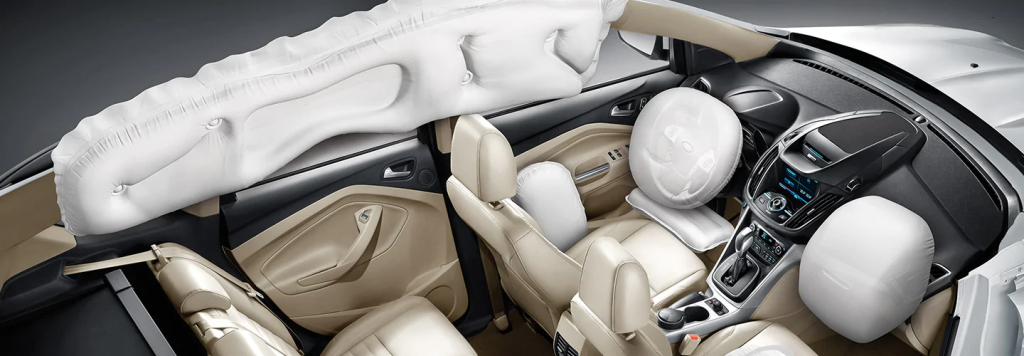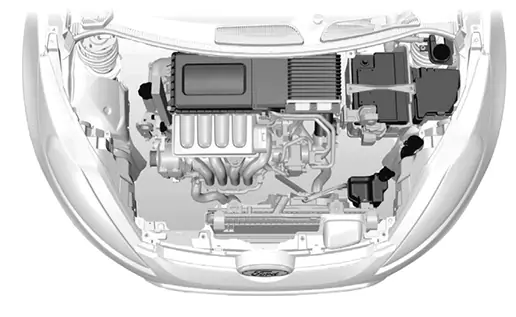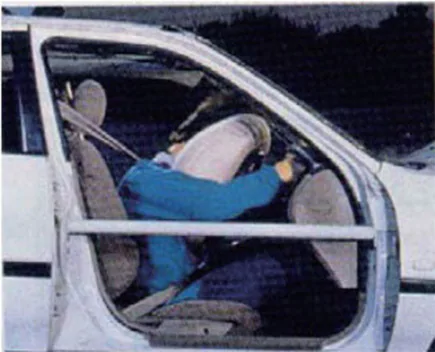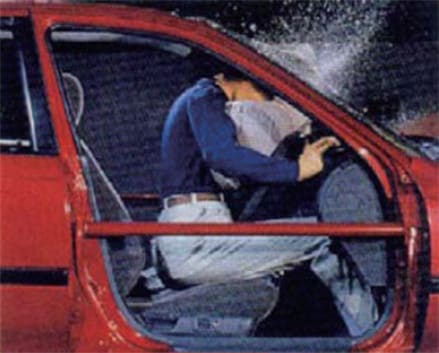- ယာဉ်များ
- ဝယ်ယူမှု
- စက်ပစ္စည်းဆိုင်ရာ
- ပိုင်ဆိုင်မှု
-
-
Quality Part & Collection
- Brake
- Battery
- Ford Genuine Parts
-
-
-
SYNC Support
- SYNC™ Support
- SYNC™ 2 Support
- SYNC™ 3 Support
-
ဆက်သွယ်ရန်
- Ford Call Center
-
- Ford Owners Club Myanmar
- Ford အကြောင်း
- အစမ်းမောင်းနှင်မှု
- အချက်အလက်စာစောင်
DRIVING SAFETY

Precautions for Driving Safety:

Daily Checks for a Long Journey, Especially for Long-Distance Travel:
1) “Five oils and two fluids” (engine oil/braking oil/power steering pump oil/transmission oil/gasoline and coolant fluid of the engine water tank/windshield washer fluid) and chapping and loosening of oil or water pipes inside the engine cabin.
2) Conditions of all lights, tyre pressure, visual chapping, depth of worn tyre groove, brake pedal and engine operation.
A huge inertial force generated in the case of a car collision or emergency braking from an accident can cause drivers and passengers to collide with steering wheels, windshields and chair backs again, easily leading to severe driver and passenger injuries, even throwing some away from their seats or car. Safety belts can bind drivers and passengers to their seats, effectively preventing drivers and passengers from a second collision in the case of an accident. Its buffering role can absorb much kinetic energy, alleviating injuries to drivers and passengers.
-
Fastening Your Belt
If the safety belt is not fastened, the airbag won’t be as effective.


-
Frequent Checks
Frequently check the state of the safety belts. E.g. If belt surface is smooth, the pre-fastening function, safety belt fasteners, prompt tone and warning lights can work normally. Damaged or abnormal safety belts need to be repaired at the 4S store in a timely manner.
-
For Children
Safety belts for adults should not be used by children. Use child car seats installed.
There are many non-original parts on the market. Some examples include:
-
Headlight
A transmission shaft is designed to bear a heavy load, so materials and precision are considered and strictly tested for an original transmission shaft. Otherwise, it will fall in driving, leading to vehicle body shake, quickly damaging related parts like the wheel shafts and steering system and severely affect driving safety.
-
Transmission Shaft
A headlight’s brightness must be taken into account. If it is too bright or dark, driving safety will be affected. Additionally, an original headlight will not age easily and is more durable compared to a non-original headlight, which can affect its brightness.
-
Brake Pad/Disc
If a non-original brake disc cracks, it will severely affect the driving safety.
An original brake pad is designed strictly according to the requirements of durability, brake performance, noise and environmental protection, and passes strict car match validation. Generally, a non-original brake pad cannot ensure the design and quality. Problems such as ineffective brake due to a declined thermal brake effect and abnormal system operation caused by incompatibilities between ABS and ESP system frequently occur.
-
 Engine Oil and Oil Filter
Engine Oil and Oil Filter
A non-original engine oil and oil filter will damage an engine due to bad viscosity coefficient and filtering effect of the engine oil. If the car owner cannot detect the problem in time, it will even lead to loss of the whole engine. This case frequently occurs.
To maximize the driving safety, it is best to regularly maintain and repair your car at the 4S store, because a 4S store can supply original parts in time and provide professional repair and maintenance services.
-
DVD player, navigation and reversing video system
A CD and DVD player is closely associated with the radio reception function, disc reading function, AUX/USB connection function, car door horn sound output and navigation and reversing video display function, because these functions will communicate data via a CD and DVD player. If a non-original DVD player, navigation and reversing video system are installed, it may lead to bad radio reception, noises, poor disc reading capability, unavailable AUX/USB connection and identification failure, low-quality gate horn output sound, inaccurate navigation map, no tone, blue navigation screen, bad navigation input function and automatic switching failure of the navigation and reversing video display due to the poor quality of a non-original part or data communication problems. To ensure that the sound system of your car works normally, it is recommended to use original parts.
-
 ABS
ABS
The ABS can effectively circumvent the wheel lock to ensure that the car can steer in case of emergency braking, avoiding a severe accident. When the ABS works, the brake pedal will transfer the counterforce to the driver’s feet, which is normal because the driver usually keeps stepping on the brake pedal.
If the brake pedal is stepped on due to an emergency while driving, the pedal will quickly react and give out a vibration sound. It indicates that the anti-lock braking system is triggered to avoid slippery areas and control the car according to the direction.
-
Automatic Transmission Car
Do not shift gears to the neutral position while driving if you have an automatic transmission car. This can cause lack of fluid lubrication and cooling, damaging the automatic transmission It can lead to another operation safety problem, affecting the braking distance which may lead to a severe accident.
-
Manual Transmission Car
It is recommended to avoid sliding at a neutral position while driving a manual transmission car, especially in long downslope distances. This may make an engine flame out in case of an emergency. The emergency braking distance is affected due to no engine braking, which may lead to an accident. Some drivers think that driving at a neutral position can save gasoline. However, the ECU (electronic control unit) of a car will calculate the spraying oil according to the input signals of plentiful sensors. Stepping on the clutch pedal (or neutral position) in sliding, will not stop the ECU from spraying oil but will spray oil according to the idle mode. The ECMU will cut off oil based on different working conditions in sliding at a position and stop spraying oil, so the oil consumed at a neutral position is more than oil consumed at other positions. The manual transmission car can shift to a neutral position in case of parking.

